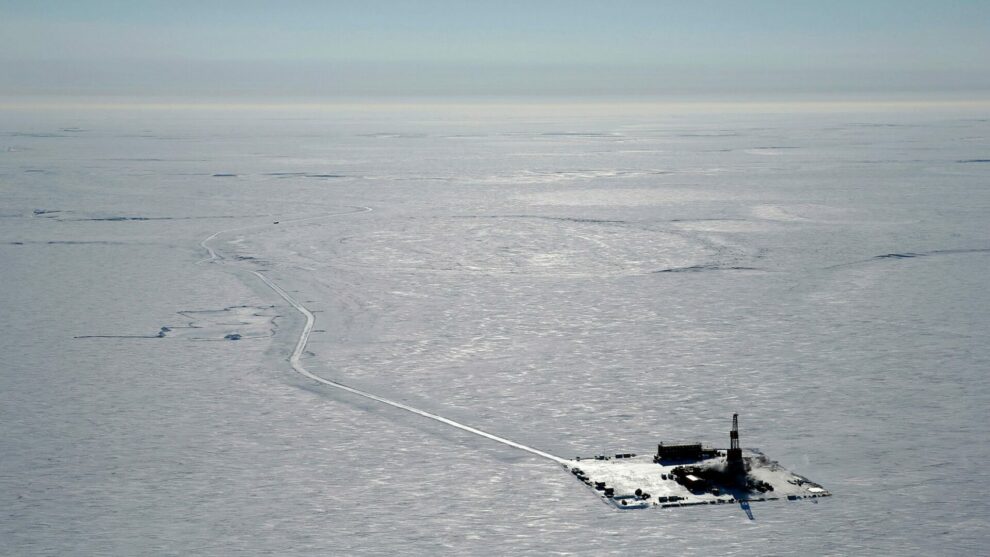On March 13, the Biden administration approved one of the largest oil developments on federal land, a decision that came after months of intense lobbying and over objections that the project, known as Willow, would undermine U.S. efforts to phase out fossil fuels worldwide.
For weeks, this Alaskan oil development – more than 4,000 miles from the White House – has become central to the country’s debate over climate change.
It has captivated activists and young people who united online to try to block it. Alaskan leaders and some residents, on the other hand, see it was the most important federal decision facing their state and a potential economic boon.
Oil industry leaders say it is key to their future relationship with President Biden, who recently sought to defend the decision during an official visit to Canada. A judge on April 3 rejected an early bid to halt the project, but legal proceedings continue.
Here’s what you need to know about Willow.
– – –
Where is the Willow project taking place?
Willow is an oil reserve in Arctic Alaska controlled by the oil company ConocoPhillips. It’s on Alaska’s North Slope, less than 30 miles from the Arctic Ocean.
The region is in the National Petroleum Reserve-Alaska, or NPR-A, the nation’s largest piece of public land. The region, about the size of Indiana, was first recognized by President Warren G. Harding in 1923 and designated specifically for oil and gas development by the Naval Petroleum Reserves Production Act in 1976. The law created special rules for oil and gas extraction and set aside some areas for “maximum protection” of the environment. Today it is one of the most promising regions in the U.S. for new oil, but is also a key habitat for polar bears as well as tens of thousands of migrating caribou and waterfowl.
Why is the Willow project controversial?
Willow is now the biggest oil project under consideration in the country, according to consulting firm Wood Mackenzie. ConocoPhillips estimates its cost at $8 billion to $10 billion.
That has also made it a top priority for climate activists. They are pushing to reduce fossil-fuel consumption as a way to cut the emissions that cause climate change, and have tried to stop major investments like this as a way to push the world away from oil. This project is especially vulnerable to public intervention because it is on federal lands and requires federal permits to go forward – and Biden had promised to end new oil drilling on federal land.
ConocoPhillips has held leases to develop oil for the region since the late 1990s and discovered Willow with two exploratory wells drilled in 2016. After roughly five years of permitting and legal fights, the Biden administration approved the project to have as many as three drilling sites with up to 199 total wells. It shrunk the project from the five pads ConocoPhillips had originally proposed following recommendations from a government review to keep development out of a yellow-billed loon nesting site and caribou migration paths.
– – –
What is Willow going to do?
The Bureau of Land Management estimates that Willow could produce 576 million barrels of oil over 30 years.
Initial gravel mining and road construction work has already started for the development, which will have a total footprint of 499 acres, according to the administration’s final decision. For comparison, that is two and a half times the area the Washington Commanders recently acquired to build a new football stadium. Willow’s plan includes hundreds of miles of roads and pipelines, airstrips, a gravel mine, and a new processing facility in the middle of pristine Arctic tundra and wetland.
Burning Willow’s oil would also put into the atmosphere an estimated 239 million metric tons of carbon dioxide during the project’s 30-year lifetime – or the equivalent of driving 1.7 million gasoline-powered cars a year. That number assumes that, if the ConocoPhillips project didn’t go forward, no other oil producers would pick up the slack.
Under estimates from the Biden administration, even if Willow doesn’t get built, the United States and the rest of the world will still burn a large amount of fossil fuels. Cleaner options, the estimates said, would only account for roughly half of the energy demand Willow would have met.
Willow going forward would create about 70 million metric tons of additional CO2 from the project in U.S. emissions – and another 60 million tons internationally – equivalent to just 0.03 percent of U.S. emissions in 2021, according to the estimates.
– – –
What are the benefits and harms of the Willow project?
Supporters say new oil from Alaska will help ensure the U.S. has a reliable, domestic supply of energy. That is important for limiting the country’s and its allies’ reliance on oil suppliers often run under authoritarian regimes and weak environmental regulation. Willow is also estimated to produce billions of dollars of economic activity and tax revenue in Alaska, where state leaders and many Alaska Natives say they need a boost to a flagging economy.
But access to oil like that could also help prolong the country’s reliance on fossil fuels, with no guarantee the technology will be in place to stop their contribution to climate change. Because the Biden administration approved it, the project may also undermine the president’s credibility in pushing other countries to develop cleaner alternatives instead of oil and natural gas. And many locals are less enthused about the oil revenue and more concerned the project may harm local animal populations that are key to the community, degrade the region’s air quality, and lead to spills, leaks and blowouts that can come with major oil development.
– – –
Why did Biden approve Willow despite his environmental pledges?
Activists aggressively protested Willow in part because Biden had made big promises to prioritize environmental protections, climate change and an end to drilling on public land. Administration officials said those were important issues that influenced the project, but not enough to stop it.
They said that instead they were limited by the law that governs NPR-A and the leases that ConocoPhillips has held since long before the Biden administration took office. The law gives a company with such leases the right to develop, and strong legal standing to fight the government if it tries to block that work. If rejected, ConocoPhillips could have sued, potentially won billions of dollars at taxpayer expense, and still been able to develop the project anyway, legal experts have said.
Other factors may have also played a role. Biden had been heavily lobbied by Alaskan officials on the issue as long as he has been president, and needs two of them – the moderate Sen. Lisa Murkowski (R-Alaska) and Rep. Mary Peltola (D-Alaska) – to get his appointees and agenda through a narrowly divided Congress. He has also promised voters he would fight high oil and gasoline prices, and has acknowledged in recent months oil still likely has a place in the economy far into the future. His biggest climate policies so far have focused more on building out and encouraging consumers to adopt cleaner energy than they have on limiting fossil-fuel production.
– – –
What is the fallout from Biden’s decision on Willow?
A reporter asked Biden on Friday about his Alaska oil drilling decision while he was on an official state visit to Canada. Some Canadians see a contradiction in the president’s climate positions given that in 2021 he rejected the Keystone XL pipeline, which would have brought Canadian oil to U.S. refineries.
Biden responded that he had little legal choice but to approve Willow. “My strong inclination was to disapprove of it across the board, but the advice I got from counsel was that if that were the case, we may very well lose in court,” the president said at a news conference.
If the administration had lost, he said, the project might have gone forward without the conservation measures the Interior Department included in its final decision.
– – –
Is the Willow decision sure to result in drilling?
Not necessarily. On March 15, a coalition of environmental groups – led by Earthjustice, on behalf of Center for Biological Diversity, Defenders of Wildlife, Friends of the Earth and Greenpeace USA, with the Natural Resources Defense Council as co-plaintiff – filed a lawsuit to overturn Biden’s decision.
On April 3, a federal judge rejected a request by those groups to issue a preliminary injunction, which would have stopped construction on the project.
The groups argued that road construction and gravel mining could disturb caribou herds and hunters in the area. The judge, Sharon L. Gleason, appointed by former president Barack Obama, disagreed, ruling that the road building could actually help local people in their hunts.
“Today’s decision is a disappointment, but we remain undeterred,” Nicole Whittington-Evans, Alaska Program Director for Defenders of Wildlife, said in a statement.
Legal proceedings will continue on the larger issues posed by federal approval of the project.
Source: Yahoo News















